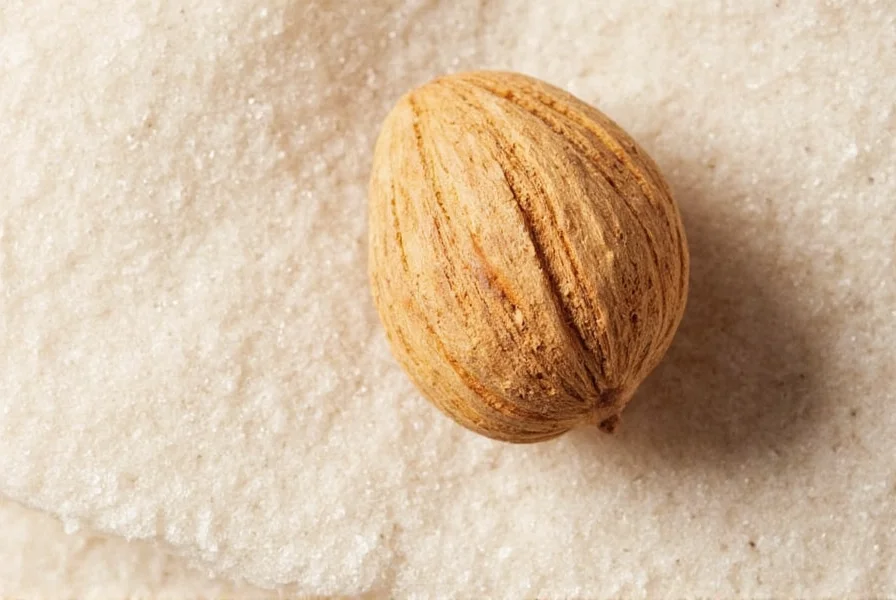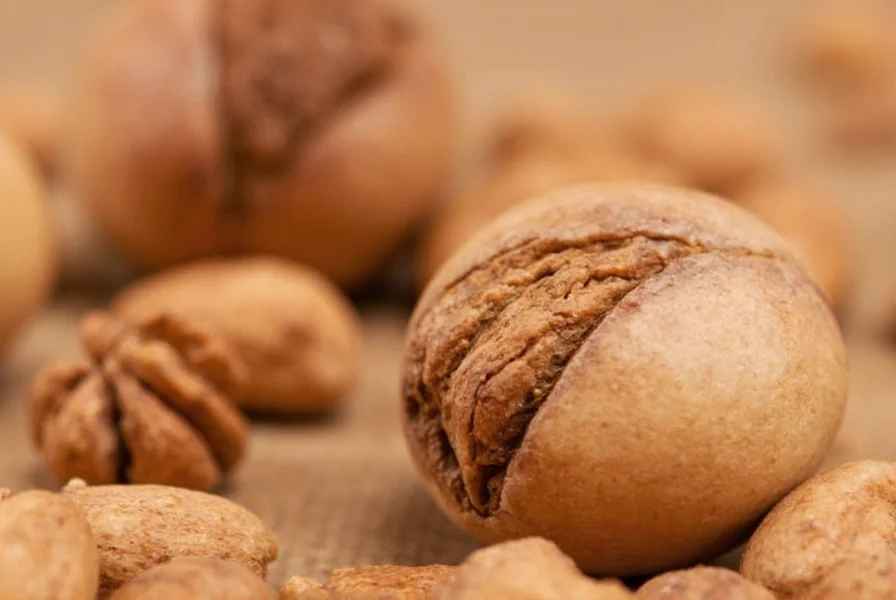Nutmeg's misleading name has caused confusion for centuries, leading many to mistakenly believe it's related to almonds, walnuts, or other true nuts. Understanding the botanical reality of nutmeg is crucial for both culinary enthusiasts and those managing food allergies. This detailed explanation will clarify nutmeg's true origin, address allergy concerns, and provide practical information about this versatile spice.
Botanical Origins of Nutmeg
Nutmeg comes from the Myristica fragrans tree, a tropical evergreen native to the Banda Islands in Indonesia. The tree produces a yellow, peach-like fruit that splits open when ripe, revealing a crimson-red, lacy covering called mace surrounding a hard, brown seed—the source of nutmeg.

When harvested, processors remove the mace (which becomes a separate spice), then dry the seed for 6-8 weeks until it's ready for grating or grinding. This careful process preserves the complex flavor compounds that make nutmeg so valuable in cooking.
Nutmeg vs. True Nuts: Understanding the Difference
The confusion stems from terminology. In botanical terms, a "nut" is a specific type of dry fruit with a hard shell that doesn't split open. True nuts include:
| True Nuts (Botanical) | Seeds Mistaken for Nuts |
|---|---|
| Acorns | Nutmeg |
| Hazelnuts | Almonds (actually drupes) |
| Beechnuts | Peanuts (legumes) |
| Chestnuts | Pistachios (drupes) |
Nutmeg is properly classified as a seed, specifically the seed kernel of a drupe (a fruit with a hard stone inside). This botanical distinction matters significantly for people with nut allergies.
Allergy Considerations: Is Nutmeg Safe with Nut Allergies?
Most people with tree nut allergies can safely consume nutmeg because it's not botanically related to tree nuts. However, several important considerations exist:
- Nutmeg processing facilities sometimes handle actual nuts, creating cross-contamination risks
- Some individuals may have rare, specific allergies to nutmeg itself
- "Nut" in the name causes unnecessary avoidance by some with nut allergies
According to food allergy experts, nutmeg allergy is extremely rare and unrelated to tree nut allergies. The American College of Allergy, Asthma, and Immunology confirms that spices like nutmeg don't typically trigger reactions in people with nut allergies.
The Relationship Between Nutmeg and Mace
Many people don't realize that nutmeg and mace come from the same fruit. When the Myristica fragrans fruit ripens:
- The outer fleshy layer splits open
- The bright red aril (mace) is removed and dried separately
- The inner seed (nutmeg) is dried for additional processing

Mace has a more delicate, slightly sweeter flavor than nutmeg and is often used in lighter-colored dishes where the brown specks of nutmeg would be visible. Understanding this relationship helps explain why both spices share similar flavor profiles despite their different appearances.
Practical Uses and Storage Tips
Freshly grated nutmeg always delivers superior flavor compared to pre-ground versions. For best results:
- Store whole nutmeg seeds in an airtight container away from light
- Grate only what you need immediately before use
- Use a fine microplane grater for the best texture
- Pair with dairy-based sauces, root vegetables, and winter squash
When substituting ground nutmeg for whole, remember that 1 whole nutmeg seed equals approximately 2-3 teaspoons of ground spice. Proper storage maintains nutmeg's volatile oils, preserving both flavor and potential health benefits.
Historical Context and Global Significance
Nutmeg's history reveals why its name causes confusion. European traders in the Middle Ages encountered this spice from distant lands and named it based on appearance rather than botanical accuracy. The Dutch went to extraordinary lengths to control the nutmeg trade in the 17th century, even destroying trees on other islands to maintain their monopoly.
Today, nutmeg grows in various tropical regions including Grenada, Malaysia, and India, but Indonesia remains the largest producer. This global journey explains why misconceptions about nutmeg's origin persist across different cultures.
Is nutmeg safe for people with tree nut allergies?
Yes, nutmeg is generally safe for people with tree nut allergies because it's a seed, not a botanical nut. However, check for potential cross-contamination if processed in facilities that handle actual nuts.
What's the difference between nutmeg and mace?
Nutmeg is the seed inside the fruit of the Myristica fragrans tree, while mace is the red, lacy covering (aril) that surrounds the seed. They come from the same fruit but have slightly different flavor profiles.
Can I substitute nutmeg for mace in recipes?
Yes, but use about 3 times more nutmeg than mace since mace has a more concentrated flavor. A general rule is 1 teaspoon mace equals 3 teaspoons nutmeg.
Why is nutmeg called a nut if it's not one?
The name comes from historical misclassification. European traders in the Middle Ages named it based on appearance rather than botanical accuracy, and the name stuck despite being technically incorrect.
How can I tell if my nutmeg has gone bad?
Whole nutmeg stays fresh for 3-4 years when stored properly. If it loses its strong, sweet aroma or the flavor seems weak when grated, it's likely past its prime. Ground nutmeg loses potency much faster, typically within 6-12 months.











 浙公网安备
33010002000092号
浙公网安备
33010002000092号 浙B2-20120091-4
浙B2-20120091-4